Why You Should Row with Concept 2 Slide Equipment
The Concept 2 Slide adds a whole new dimension to the feel of indoor rowing and will take your training sessions to the next level.
It enables you to replicate the movement of rowing on water and row at a higher stroke rate.
Concept 2
For over 40 years, Concept2 has been making top-quality exercise equipment that gives you a great workout in your home or gym.
Concept2 created the original rowing ergometer (or rowing machine) in 1981 as a training tool for competitive athletes.
It was quickly adopted by athletes outside of rowing as well for its convenient, effective workout. Since then, their RowErgs have earned a worldwide reputation for unrivaled function, durability, and post-sale customer support.
All Concept2 RowErgs are suitable for home and gym or commercial use. Experience the health and wellness benefits of the sport of indoor rowing when you find the best rowing machine for your needs.
What is Concept 2 Slide Equipment?
Concept2 Slides add a new dynamic to training with an existing Concept2 RowErg, as they enable the machine to safely move back and forth beneath the athlete, more accurately simulating the feeling and effect of rowing on the water.
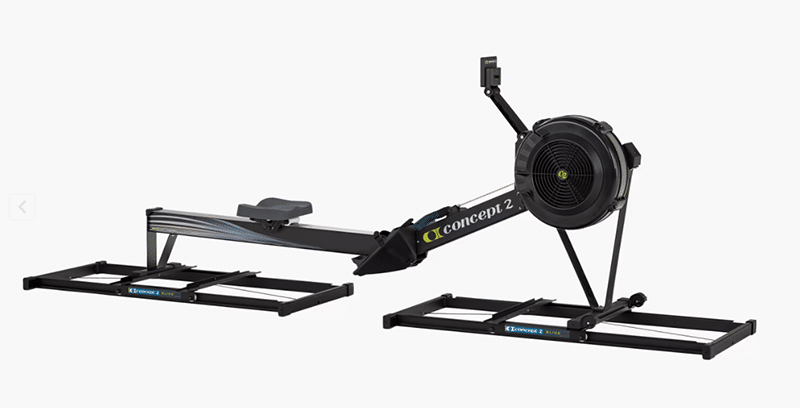
Users are also able to row at a higher stroke rate, as they are only moving the mass of the rower and not their own additional body mass.
Sold as pairs, each slide consists of a base with two tracks and a wheeled carriage that runs on tracks. Light bungee cord tension keeps the carriage centred on the base.
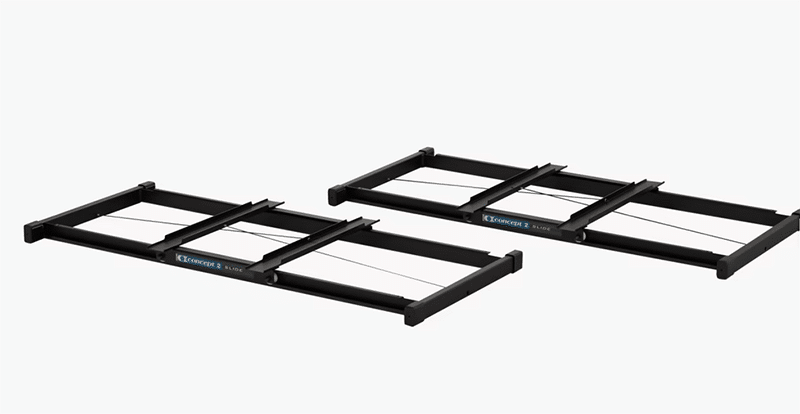
How Does Concept 2 Slide Work?
A set of two slides is all that’s needed to “float” one indoor rower; simply place one slide on the front leg and another on the back.
Additional slides can be purchased to create a “team boat” configuration, in which two rowing machines are linked along with three slides to allow multi-athlete training. To connect three rowers for expanded crew training, you’ll need four slides, and so on.
Specifications:
- Sold as Pairs
- Compatibility: Concept2 RowErg Models A, B, C, D or E (Models C, D, or E for Team Boat set-up) – NOT compatible with Dynamic RowErg
- Construction: Wheeled Carriage + 2 Tracks + Light Bungee Cord Tension
- Single Slide Dimensions: 24.25 in x 56.25 in x 3.5 in (61.6 cm x 142.9 cm x 8.9 cm)
- Single Slide Weight: 26 LB (11.8 kg)
- Level floor surface recommended
- Space Needed: (for one RowErg on a pair of slides)—11 ft x 4 ft (335 cm x 122 cm)
Advantages of Indoor Rowing Machines
Rowing machines offer several advantages as a form of exercise:
Low impact: Rowing machines are low impact, meaning that they put less stress on your joints than other types of exercise equipment, such as treadmills or ellipticals. This makes them a good option for people who are recovering from an injury or have joint pain.
Full-body workout: Rowing machines provide a full-body workout, engaging multiple muscle groups, including your legs, back, arms, and core. This makes them an efficient way to get a complete workout in a shorter amount of time.
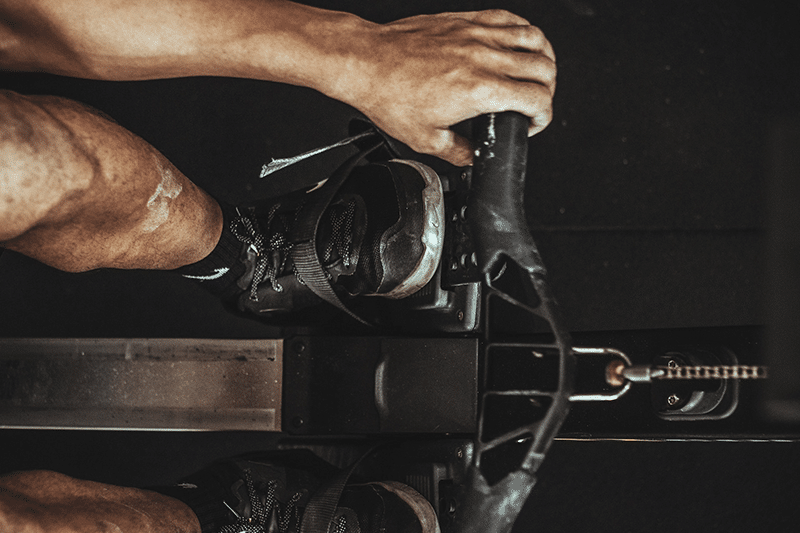
Cardiovascular benefits: Rowing machines provide an excellent cardiovascular workout, helping to strengthen your heart and lungs and improve your overall fitness level.
Weight loss: Rowing machines can help you burn a significant number of calories, making them an effective tool for weight loss and management.
Convenience: Rowing machines are relatively compact and can be used in the comfort of your own home, making them a convenient option for those who don’t have access to a gym or prefer to exercise at home.
Versatility: Rowing machines offer a variety of workouts, from steady-state endurance training to high-intensity interval training (HIIT), making them suitable for a wide range of fitness levels and goals.
Technique Tips
Rowing is easy to learn. Once you know the basics, you’ll be well on your way to reaching your fitness goals.
Use the tips and resources in this section to make the most of your indoor rower.
Learn Proper Technique
Before your first workout, take the time to watch technique videos. Learning proper technique from the start will help you row better and faster in the long run.
It will also help prevent injury and keep you from developing bad technique habits that are difficult to break.
Educate Yourself
Become familiar with the basic things that will be key to your long-term success: beneficial stretches, helpful breathing techniques, how to be comfortable on the indoor rower, and what the damper setting does.
Build Up Gradually
When you first get on the indoor rower, resist the temptation to do too much too soon.
Instead, make sure you focus on your technique and learn to maintain a steady pace.
Track Your Progress
Monitoring your progress is one of the best ways to stay motivated and achieve your goals.
Train with a Partner
Finding a workout partner can make a huge difference in sticking to a new routine.
Rowing Workouts from Concept 2
Add these sessions into your training.
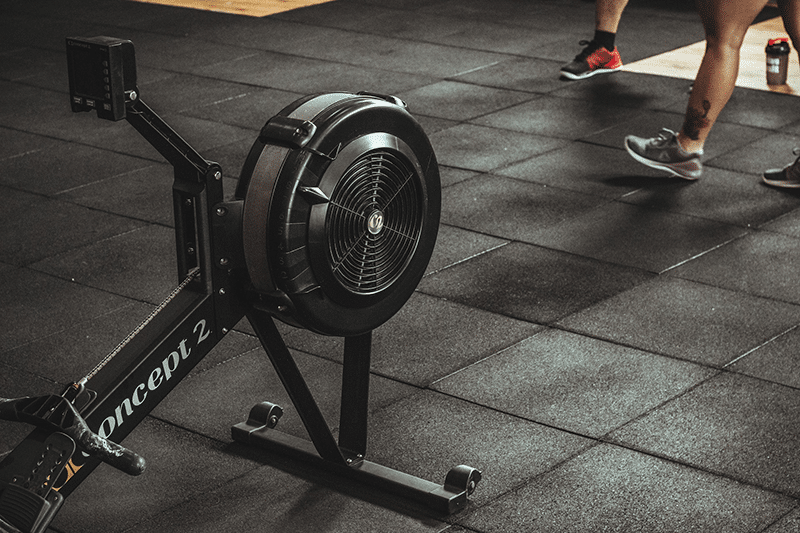
First Workouts
Once you’re comfortable with rowing technique, gradually begin increasing the duration and intensity of your workouts. Here are workouts to try. We recommend doing them in the order listed.
Workout 1
Start with a row of 3–5 minutes. Then take a break to stretch and walk around. If you feel good, do up to four of these short intervals of rowing.
Workout 2
Begin experimenting with stroke rate and power output. On the Performance Monitor, stroke rate is displayed in the upper right corner; power output appears in the centre of the monitor and can be displayed in watts, calories or pace (time per 500m).
Here are the workout details:
- 3 minutes at 20 strokes per minute (spm), comfortable effort; 1 minute rest.
- 3 minutes at 22 spm, harder effort; 1 minute rest.
- 3 minutes at 24 spm, comfortable effort; 1 minute rest.
- 3 minutes at 24 spm, harder effort; 1 minute rest.
- 10 minutes steady state rowing at your choice of power and stroke rate. Make note of what pace you settle on, because you will use it in your next workout.
This episode of As the Flywheel Spins: The Concept2 Workout Podcast will guide you through the workout, giving you more coaching and guidance as you make your way through this workout.
Workout 3
This workout introduces longer rowing with stroke rate variation. Here are the details:
Do four 5 minute pieces, varying the stroke rate as noted below.
Try to row at a pace that is a few seconds faster than your 10 minute pace from Workout 2.
- 20 spm for the first 2 minutes
- 22 spm for the next 2 minutes
- 24 spm for the last minute
Rest: row very easily for 2 minutes before starting the next 5 minute piece.
This episode of As the Flywheel Spins: The Concept2 Workout Podcast will guide you through the workout, giving you more coaching and guidance as you make your way through this workout.
Workout 4
This workout focuses on longer, steady rowing.
Do two 10 minute pieces with 3 minutes rest in between. Aim for a pace that’s between the paces you rowed in Workouts 2 and 3. Your stroke rate should be between 22 and 26.
Workout 5
This workout features short intervals for variety. This is the workout to see how fast a pace you can achieve.
Row 1 minute hard, 1 minute easy for a total of 20 minutes. Watch the central display for your pace. Aim for a stroke rate of 24–28. Record your pace after the workout using the recall/memory function on the Performance Monitor.
Benchmark Piece
Once you complete Workout 5, do a benchmark piece of 30 minutes nonstop.
Record your total meters, and repeat this workout every few weeks to see how you are progressing.

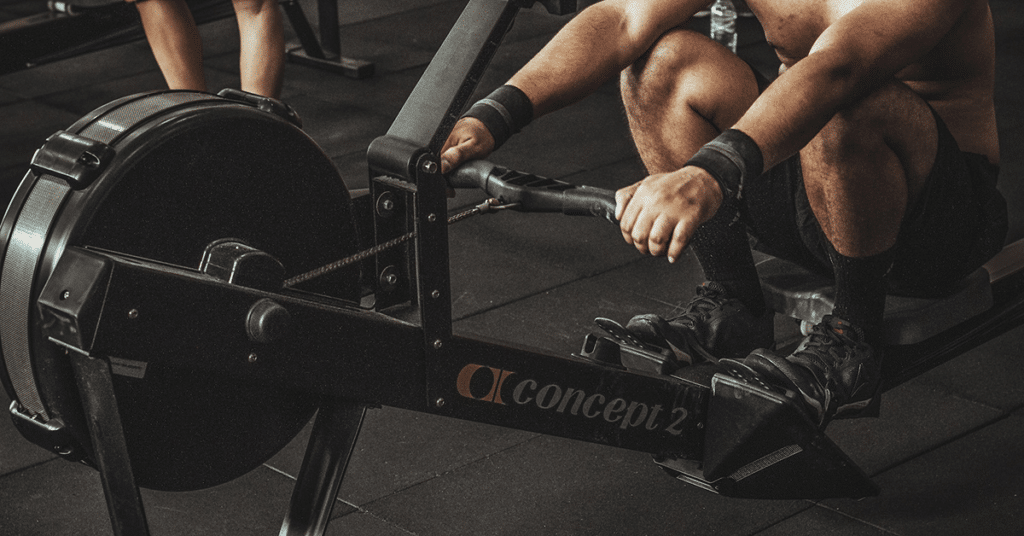

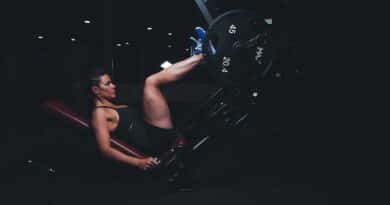
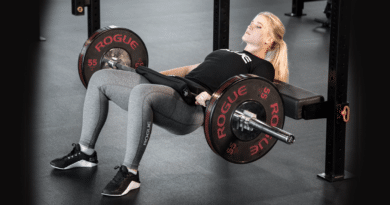
Pingback: Why You Should Train with the Volcano Tire Flip and Yoke Machine - Outdoor Fitness Society